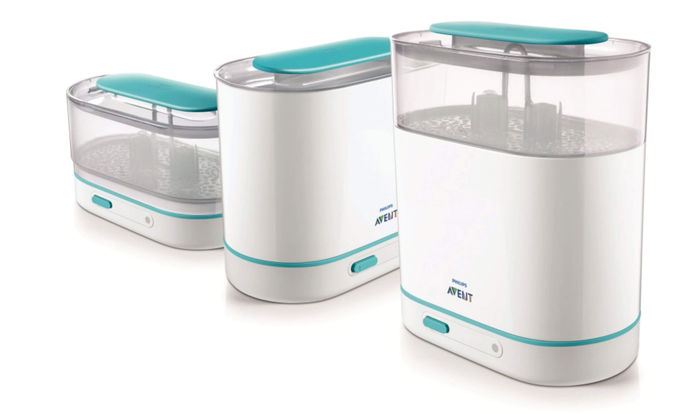How to Keep a Baby Comfortable in Monsoon —Must Follow These 7 Tips

Children are fond of the monsoons, as they love getting wet in the rains. But this season is dreaded by mothers. The high humidity, heat, exhaustion, excessive sweating are some factors that make even the most cheerful of children cranky and irritable. But for the little ones—newborns, infants, and babies—the sweltering heat poses some more hidden dangers such as stomach and skin ailments, indigestion, allergies from insect bites etc.
Must-follow Rainy Season Baby Care Tips
Our quick monsoon season guide tells you how to take care of the babies when it rains...
#1 Keep little ones Indoors when it is Raining
Children love to get wet in the rain, but for the smaller ones, especially those under or close to 12 months of age, rains may spell some trouble. If an infant gets wet in the rain, it can cause skin rashes, runny nose, and fever etc, since their immunity is still not strong enough. You can sit with them in a covered patio or balcony to let them enjoy the weather, but limit direct exposure. Read what rain-time outdoor & outdoor precautions.
#2. Insect Repellents are a Must
Use insect/mosquito repellent when stepping outdoors as during monsoon there is an increase in the population of bugs, insects, and spiders etc. You can choose from natural (that contain citronella) or medicated ones. Also, keep the arms and legs of the infant covered despite using the mosquito repellent cream. In case of an insect/mosquito bite, rubbing an ice-cube helps reduce the swelling and gives relief from itchiness. Also, aloe vera gel may prove to be handy. Read
#3.Safe Clothing
Keep baby’s attire simple, and made of pure, breathable fabrics such as cotton and mal-mal. Avoid too many frills or clothes with multiple layers. Do not go for clothes fabricated from synthetic material as synthetic tends to trap in the sweat next to the skin, giving rise to a host of skin complaints. Also, change clothes frequently and wash as frequently as possible. Make the child wear clothes that are loose and comfortable to let the sweat evaporate. When stepping outdoors, do carry a rain-coat cover for the pram, in case you get caught in the rain accidentally.
#4. Ambient Temperature
There is always a debate on how cool a room should be for the baby during the monsoon (since the temperature fluctuates a lot in this season). We tend to work on adult perception that since it is so hot, our baby needs the air-conditioner, but children adapt to changing temperatures better than adults. Focus should be on the right clothing rather than the room temperature. Cover the baby’s legs and arms etc in loose clothing such as a pajama or a full-sleeve tee in a cold room. Keep the child away from direct drafts of air be it from the A/C or the fan. When dressing the child in a birthday dress, or a wedding dress, ensure arms are covered by putting a cotton tee-shirt underneath.
#5. Watch out for Stomach Ailments
As the humidity is a perfect time for bacteria to breed, ensure you exercise maximum caution where hygiene is concerned, especially with an infant. If the baby takes expressed breast milk through a bottle, it is suggested that the bottle, breast pump and all its parts be sterilized using a steam sterilizer rather than boiling. One of the simplest ways for a new mother to sterilize would be to use a steam steriliser. A steriliser uses natural steam to sterilise baby bottles and other products without using chemicals. It is better to choose a sterilizer that is spacious enough to accommodate not only bottles but also other accessories and toys like breast pump, soothers, toys, etc. Anything that may find its way into a baby's mouth!

Also Read – STOP BOILING BABY BOTTLES
#6. Opt for Nourishing Liquids and Light Meals
Newborns, still on breastfeed, get their hydration from mother’s milk so just ensure baby is not hungry. Children, who have been weaned off, or on formula, might require additional liquids. Choose healthy drinks such as tender coconut water, thin lassi, or fresh fruit juice. The ambient humidity suppresses the thirst signals but that does not mean the body doesn’t require liquids. Also, keep meals fresh, light and small rather than a big heavy meal, which can be taxing on the baby’s digestion.
#7. Watch out for Skin Infections
Monsoon is also a time when most children end up with fungal infections and skin rashes. In case the baby wears a diaper, change frequently. Also, let the skin breathe between the diaper changes. Ensure there is no water trapped in the folds of the skin, or in the soft skin between the fingers after a bath. You may check with your paediatrician for a talcum powder safe for the baby’s skin. Read how to avoid skin or fungal infection in rainy season.
Disclaimer: This blog is a special initiative to help mothers take care of their babies during monsoon and is supported by Philips Avent
Be the first to support
Be the first to share
Comment (0)
Related Blogs & Vlogs
No related events found.
Loading more...